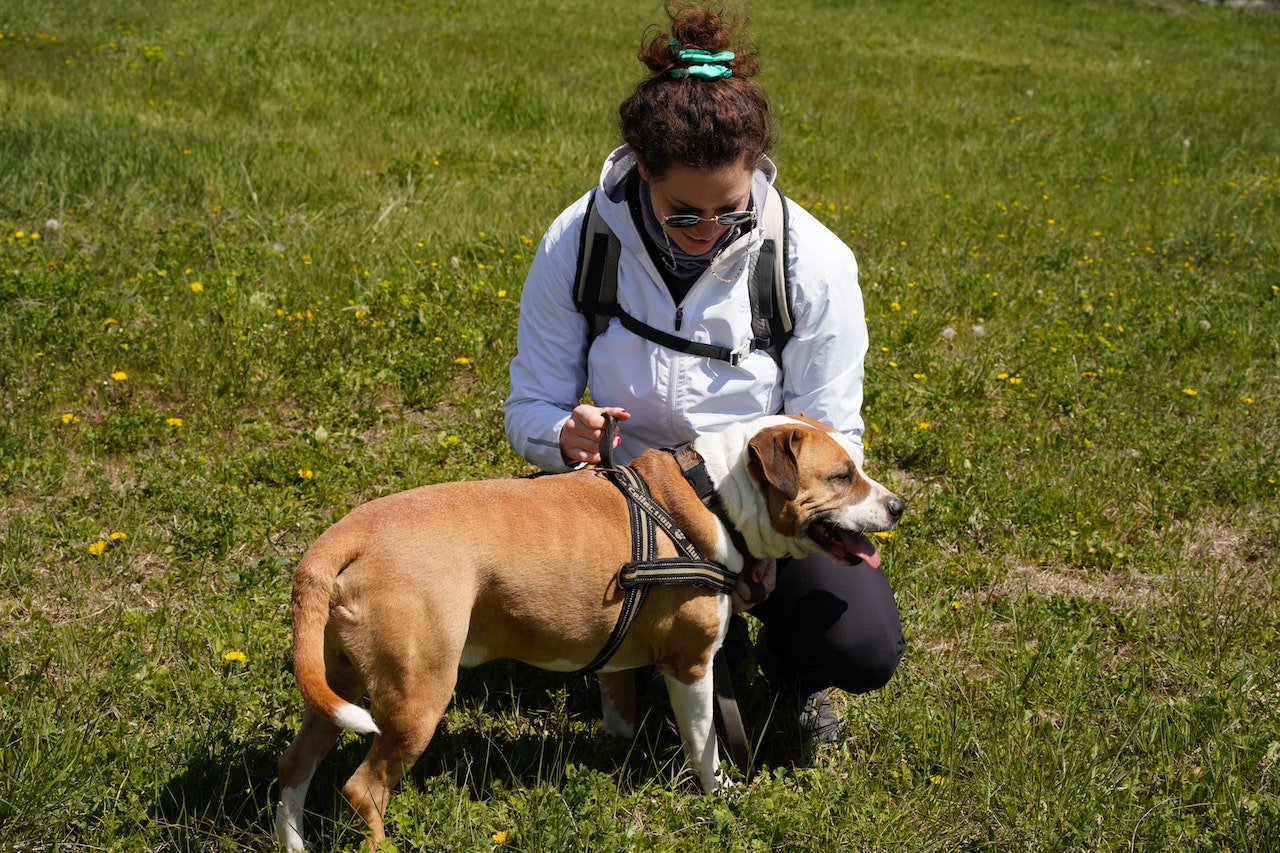How to Fit and Adjust a Service Dog Harness
Making certain your pup has the perfect fit for his harness is one of the paramount considerations to confirm that it is comfortable, secure, and safe. To start with, make sure the harness is fastened snugly so that he can’t escape it.
A good rule of thumb is the “two-finger” test, meaning that you should be able to comfortably fit two fingers between your dog’s neck and the harness.
Contents
Chest Strap
To fit your dog comfortably, the chest strap is adjustable. Simply feed the webbing through the sliders located at the back of the harness to tighten it. You’ll know it’s properly adjusted when there’s enough room for four fingers behind your dog’s front legs for sizes M/Size 0, L/Size 1, XL/Size 2, XL/Size 3, and XL/Size 4, or two fingers for sizes 3XS/Baby1, 2XS/Baby2, XS/Mini-Mini, and S/Mini. This will prevent the chest strap from rubbing against your dog’s sensitive armpits.
The top and bottom support loops and the lead for the parent attach to an O-ring at the back of the harness with a standard heavy-duty snap hook. The chest strap also attaches to this O-ring. This ensures that the collar is placed over your dog’s shoulder instead of under it, preventing the buckle on the chest strap from rubbing against your dog’s neck when walking.
When you first put on your dog’s harness, let them wear it around the house and outside on a short walk for a few minutes, giving them treats throughout their experience. This will help them get accustomed to wearing it and will help you determine if the harness fits correctly. If it’s loose, your dog may be able to slip out of it, and if it’s too tight, it could restrict movement, cause chaffing, or cut into your dog’s skin.

Belly Strap
When purchasing a service dog harness from a store like Activedogs.com, you may notice that it typically features one or two D-rings for leash attachment and adjustable buckled straps to ensure a proper fit for your furry friend. Additionally, many of these harnesses come equipped with a padded chest area to minimize any discomfort for your dog. To determine the correct size harness for your pet, measure around their torso from the base of their neck to the thickest part of their rib cage and make note of that measurement.
A properly fitted harness should be snug enough that you can only fit one or two fingers between the strap and her skin. A tight fit prevents the harness from rotating on the dog’s body, which can cause rubbing or chafing.
If a harness is too loose, your dog may slip out and run off into the distance. It may also cause her to experience chaffing or the harness to cut into her skin.
To put the harness on:
- Kneel or squat behind your dog while she is calmly standing or sitting.
- Slide the chest piece over her head so that the collar label sits on her left shoulder and the metal ring for the leash is on her center.
- Slide her front legs through the wider harness loop on her back and into the narrower loop on her belly.
Side Straps
A harness can do much for your dog, helping with training and providing comfort. But it’s important to properly fit and adjust your dog harness to avoid harm or injury to your pup.
If the harness is too loose, your dog may be able to wiggle out of it and run off. On the other hand, if it’s too tight, it can cause pain and restrict movement.
Try to fit two fingers between your dog and the harness to check if your service dog harness is the correct size. If you can, it’s a good sign that the harness is snug enough to provide safety and security without causing discomfort or restricting your dog’s movement.
The chest strap closes on the side facing the dog’s chest, so it won’t open while your pup is wearing the harness. The girth strap also comes with reflective stitching to keep your dog safe during the day or night. The front loop and D-ring are designed to help the general public recognize your dog as a service animal if necessary. The padded sleeves on the collar and trunk strap assemblies make the harness more comfortable for your dog while using it, too. These padded sleeves also reduce the amount of contact the straps have with your dog’s skin.
Leg Loops
A proper fit is essential to the comfort and safety of your dog. Too loose harness can allow your dog to wiggle out of it and escape, while a tight fit could restrict movement, cause chafing, and even lead to breathing problems or choking.
The leg loops are two wide, padded webbing loops encasing your dog’s upper thighs. They are attached to the waist belt by webbing straps that run through buckles. Depending on the type of harness you’re using, they may be adjustable or fixed. The adjustable ones have a webbing section with a buckle that can be tightened or loosened to dial the leg size. The fixed ones use an elastic section to accommodate various leg sizes.
Aim for a snug fit in the leg loops. If the harness moves around on your dog’s body while he is walking, it is too loose and needs to be tightened. To check for a snug fit, try the “two-finger rule.” You should be able to slide your fingers comfortably between your dog’s girth and the harness. If you can’t, the harness is too tight and needs to be loosened. If you have trouble getting the leg loops to be tight enough, consider buying a different gender of harness as sometimes the men’s and women’s harnesses are designed with slightly wider thigh sizes in mind.

